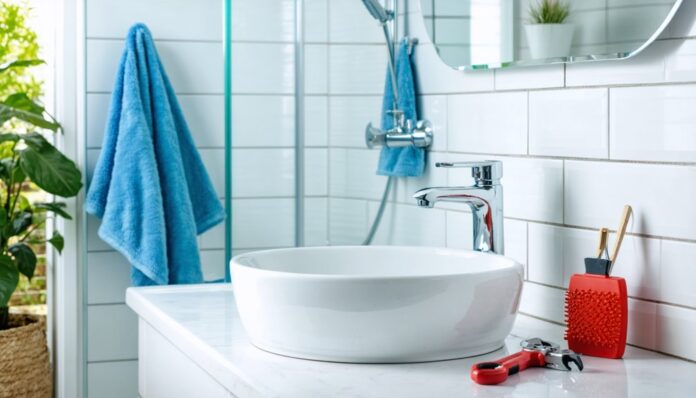Many homeowners encounter plumbing issues in their bathrooms, but not all problems require a professional. With a few simple tools and a bit of know-how, five common issues can be addressed without much hassle. From leaky faucets to low water pressure, these fixes are both accessible and effective. Discover how a few straightforward steps can save you time and money, transforming your bathroom into a well-functioning space once again.
Fixing a Leaky Faucet
A leaky faucet is a common plumbing annoyance that can waste a significant amount of water if left unchecked. In many homes, the rhythmic drip becomes an unwelcome companion, creating a sense of urgency for resolution.
Addressing this issue fosters a sense of community responsibility and environmental mindfulness. By taking simple steps, anyone can join the ranks of those who solve such everyday challenges.
The process often begins with identifying the faucet type—compression, cartridge, ball, or ceramic disc—each requiring a distinct approach. Typically, the cause lies in worn washers or seals.
Disassembling the faucet with basic tools, like a wrench and screwdriver, reveals these components. Replacing them restores smooth operation. Fixing a leaky faucet empowers individuals, reinforcing their role within a conscientious community.
Stopping a Running Toilet
One of the most persistent plumbing issues in households is a running toilet, which can lead to increased water bills and unnecessary water wastage.
This common problem can often be traced back to the toilet's internal components, such as the flapper or fill valve. To address this, members of the community can begin by inspecting the flapper for signs of wear or misalignment.
Replacing a faulty flapper is a straightforward task that can restore the system's efficiency. Alternatively, the fill valve may need adjustment or replacement if it fails to maintain the correct water level.
Restoring Water Pressure in Your Shower
Addressing bathroom plumbing issues extends beyond fixing a running toilet; another common concern is restoring water pressure in the shower. Low water pressure can disrupt morning routines and leave individuals feeling disconnected from their daily comforts.
To remedy this, one should first check the showerhead for mineral buildup, a frequent culprit. By unscrewing the showerhead and soaking it in vinegar overnight, many find that stubborn deposits dissolve, restoring optimal flow.
Additionally, inspecting the shower valve for wear or improper installation can reveal hidden issues. Sometimes, debris in the pipe leading to the showerhead restricts flow and requires professional cleaning.
Regular maintenance and a proactive approach ensure everyone can enjoy a refreshing shower, reinforcing a sense of community and care within the home.
Unclogging a Slow-Draining Sink
Tackling a slow-draining sink often starts with identifying the most common causes. Accumulated hair, soap scum, or debris in the drain are typical culprits.
People can feel empowered by knowing that they are not alone in facing such issues and that solutions are within reach. A popular initial step is using a plunger, which can often dislodge minor blockages and restore normal flow.
If this method proves ineffective, a mixture of baking soda and vinegar offers a natural alternative to commercial drain cleaners. Pour a cup of baking soda followed by a cup of vinegar down the drain, allowing the fizzing reaction to break down obstructions.
Finally, flushing with hot water can clear out remaining residue, offering a sense of shared accomplishment.
Repairing a Faulty Showerhead
A faulty showerhead can disrupt daily routines and waste water, but with a few simple steps, it can be restored to optimal function.
First, ensure the water supply is turned off to prevent unnecessary spills. Next, detach the showerhead from the arm using a wrench, taking care not to damage the fixtures.
Soak the showerhead in a mixture of equal parts vinegar and water for an hour to dissolve mineral deposits. For stubborn clogs, gently scrub with an old toothbrush.
Rinse thoroughly and reattach securely, ensuring a snug fit to prevent leaks. Test the showerhead to ensure a steady flow.
In Conclusion
In summary, addressing common bathroom plumbing issues doesn't have to be daunting. By taking simple steps such as replacing worn washers to fix a leaky faucet, adjusting the fill valve to stop a running toilet, and removing mineral buildup to restore shower water pressure, homeowners can maintain their plumbing with ease. Unclogging slow-draining sinks using natural remedies and ensuring showerheads are clean and secure are also effective DIY solutions. These straightforward fixes empower individuals to manage their bathroom plumbing confidently.


